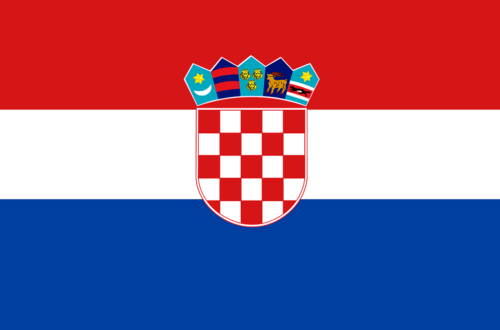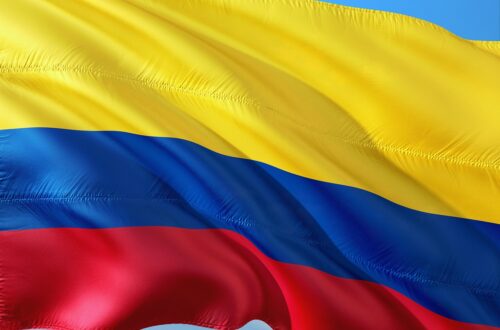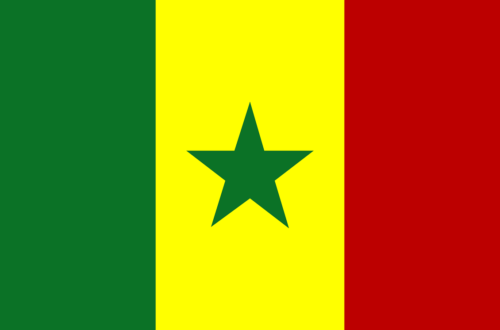
The Best 54 Fascinating Facts About Peru
Facts About Peru
Peru, nestled between the Pacific Ocean and the rugged Andes Mountains, is a treasure trove of history, biodiversity, and cultural richness. Many know of its iconic Machu Picchu, but there’s so much more that makes this South American nation uniquely captivating. From its deepest canyons to its highest peaks, and from ancient empires to contemporary traditions, this article unveils fascinating facts about Peru that every travel enthusiast and history buff should know.
A Peek into Peru’s Past: The Mighty Incan Empire
Machu Picchu: The Lost City of the Incas
Firstly one of the most interesting facts about Peru is its connection to the Incan Empire, the largest empire in pre-Columbian America. Therefore at its pinnacle, Machu Picchu stands as a testament to this civilization’s ingenuity and grandeur. Nestled amidst the Peruvian Andes, this UNESCO World Heritage site, often dubbed the “Lost City of the Incas,” remained hidden from the outside world until its rediscovery in the early 20th century. Not only is it one of the New Seven Wonders of the World, but its intricate stonework and panoramic views also evoke a deep sense of awe among visitors.
Spanish Conquest and the End of an Era
The Incan Empire met its decline with the Spanish conquest in the 16th century. Hence the Spanish conquistadors, drawn by tales of abundant gold, left an indelible mark on the nation’s history and culture, merging indigenous practices with their own.
Geographical Wonders and Natural Beauty
Lake Titicaca: The World’s Highest Navigable Lake
Situated at a breath-taking altitude, Lake Titicaca holds the title of the world’s highest navigable lake. Located between Peru and Bolivia, this massive body of water is home to the Uros people, known for their floating islands made from reeds.
Diverse Micro-Climates and the Amazon Rainforest
Did you know that half of Peru is covered by the vast Amazon rainforest? Furthermore this huge jungle is one of the most biodiverse places on the planet. But that’s not all – Peru boasts different micro-climates, from coastal regions to mountainous terrains, each with its unique flora and fauna.
Cotahuasi and Colca: Canyons Deeper than the Grand Canyon
While the Grand Canyon is renowned worldwide, few realize that Peru is home to deeper chasms. In fact the Cotahuasi Canyon and Colca Canyon are among the world’s deepest. With the former being twice as deep as the Grand Canyon.
Cultural Tidbits and Culinary Delights

Pisco Sour: Peru’s Signature Drink
When in Peru, sipping on a Pisco Sour is a must. Additionally this delicious cocktail combines pisco (a type of grape brandy) with lime juice, syrup, egg white, and bitters. Offering a tangy treat to the taste buds.
Guinea Pigs: A Traditional Delicacy
For the adventurous foodie, trying guinea pigs, or “cuy” as locals call it, is an essential Peruvian experience. In fact revered as a delicacy, this dish showcases Peru’s unique culinary traditions.
FAQs: Facts About Peru
What is the capital city of Peru?
Lima is the vibrant capital city, located along the Pacific coast.
How many official languages does Peru have?
Spanish is the official language of Peru, but many indigenous languages, including Quechua, also hold significant cultural importance.
Conclusion (for this section)
As we’ve embarked on this enlightening journey, it’s evident that Peru is more than just Machu Picchu. So from its vast geographical wonders to its rich cultural tapestry, there’s an abundance of fun facts about Peru waiting to be explored.
Source: UNESCO World Heritage Centre
Peru’s Stunning Natural Landscapes
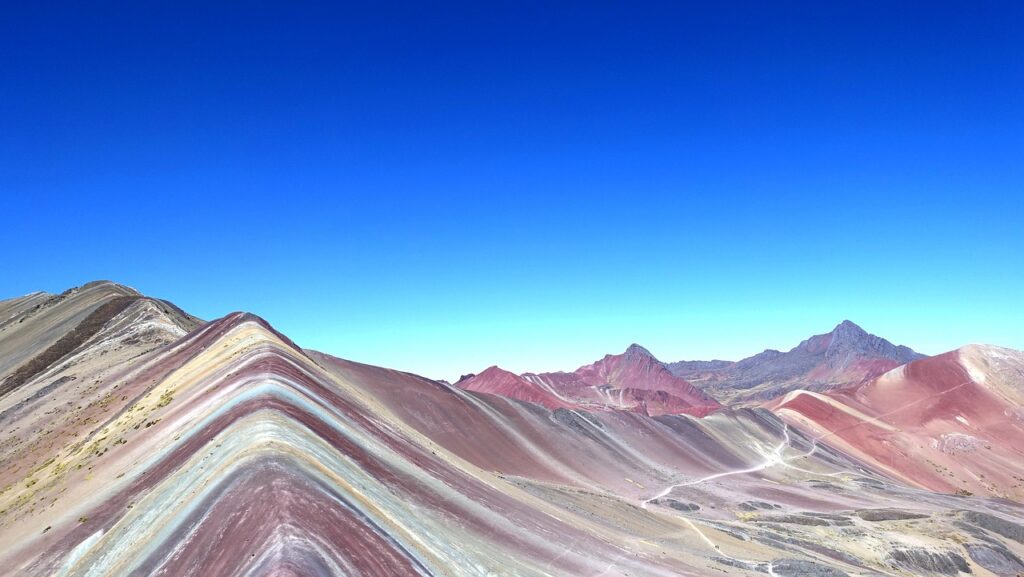
The Rainbow Mountain: A Symphony of Colors
Venturing southeast of Cusco, you’ll stumble upon the visually stunning Rainbow Mountain, known locally as “Vinicunca”. This geological marvel showcases layers of sediment turned into a colorful spectrum due to mineralogical processes over ages. Thus hues of red, gold, lavender, and turquoise intertwine to make this one of the most Instagram-worthy spots in Peru. This fact about Peru is not only visually striking but also a testament to nature’s wonder.
Andes Mountain Range: Roof of South America
The majestic Andes Mountains stretch across much of Western South America, with Peru boasting some of its most impressive peaks. The mountain range, including Mount Huascarán, offers breathtaking hiking trails, such as the Inca Trail that leads to Machu Picchu. Indeed those trekking these high altitudes often chew coca leaves, a traditional remedy to mitigate altitude sickness.
A Linguistic Tapestry: Official and Indigenous Languages
Spanish: The Dominant Tongue
Introduced during the Spanish conquest, Spanish quickly became the dominant language and remains the main language spoken today, especially in major cities and tourist hubs.
Native Languages: A Cultural Heritage
While Spanish is the official language of Peru, a multitude of indigenous languages flourish, highlighting the country’s rich linguistic diversity. Quechua and Aymara are among the most widely spoken native languages, especially in the Andean region. Despite modernization, these indigenous languages play a pivotal role in preserving Peru’s cultural heritage.
Beyond Machu Picchu: Other Must-Visit Sites
Sacred Valley: A Gem of the Incan Empire
Lying between Cusco and Machu Picchu, the Sacred Valley was a crucial area for the Incan Empire. So with fertile plains fed by the Urubamba River, it was a significant agricultural hub. Thus today, it’s a must-visit for its archeological sites, bustling markets, and captivating Andean landscapes.
Mysterious Nazca Lines: Enigmatic Geoglyphs
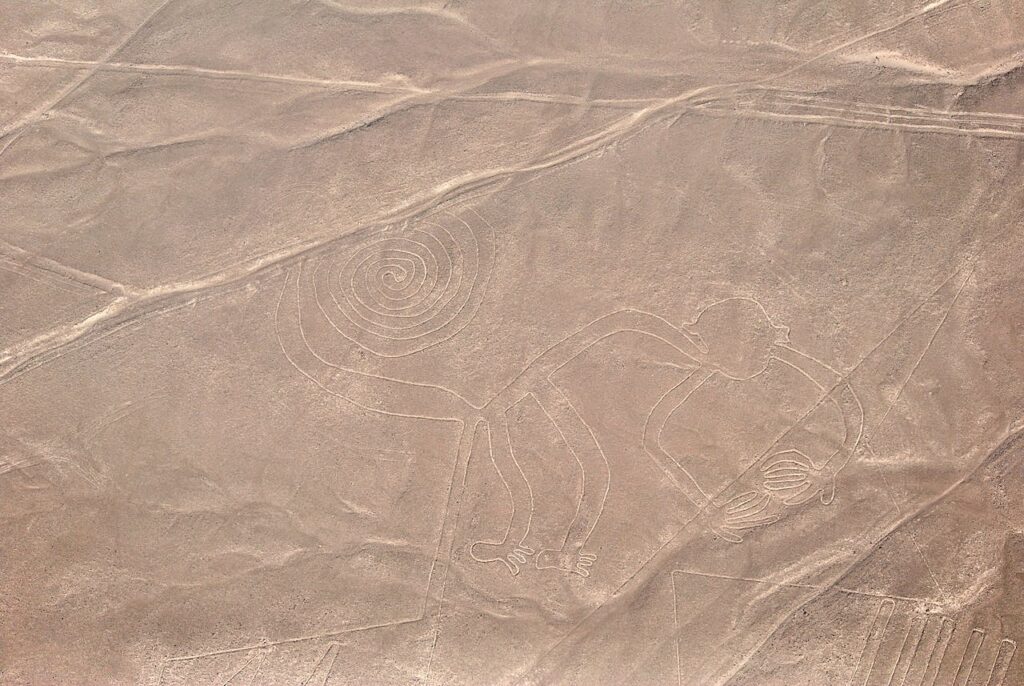
Southern Peru hides one of the world’s most mystifying archeological wonders: the Nazca Lines. Without doubt these vast geoglyphs, best viewed from the air, depict various shapes, from animals to geometric designs. However their purpose remains a subject of debate, with theories ranging from astronomical markers to elaborate rituals.
Peru’s Biodiversity: From Amazon to Andes
Amazon Jungle: The Lungs of Earth
Covering a vast expanse of Eastern Peru, the Amazon Jungle is a biodiverse haven. Therefore it’s home to thousands of species of birds, the Amazon Rainforest is a bird-watcher’s paradise. As a result its dense foliage conceals myriad wildlife, from jaguars to anacondas, offering an unmatched nature experience.
Andean Condor: The Sky’s Majesty
Among the world’s largest flying birds, the giant Andean Condor reigns supreme in the Peruvian Andes. In fact this bird, with an impressive wingspan, is a symbol of power and freedom in many South American cultures.
FAQs: Facts About Peru
How do the Nazca Lines remain preserved?
Thanks to the region’s stable climate, with minimal wind and rain, these ancient drawings have withstood the test of time.
What’s the significance of Lake Titicaca to the indigenous people?
Lake Titicaca holds spiritual significance, with legends suggesting it’s the birthplace of the sun in Incan mythology.

Conclusion (for this section)
From its awe-inspiring landscapes to its rich tapestry of cultures, every corner of Peru whispers tales of its ancient past, vibrant traditions, and natural marvels. Therefore as we journey deeper, more facts about Peru unfurl, cementing its place as a must-visit destination for every global traveler.
Celebrating Peruvian Gastronomy
Ceviche: A Coastal Delight
As you traverse the Pacific coast of Peru, one dish stands out as a testament to its rich marine biodiversity: Ceviche. This mouthwatering dish is prepared using raw fish cured in freshly squeezed lime or bitter orange juice, mixed with onions, chili peppers, and seasoned to perfection. Indeed it’s often accompanied by sweet potatoes and corn, ceviche offers a refreshing taste of the ocean.
Potatoes: The Unsung Heroes
Did you know that Peru boasts over 3,000 varieties of potatoes? Undoubtedly this humble tuber, native to the Andes Mountains, comes in different colors, shapes, and flavors. And of course from starchy to waxy, these potatoes form the backbone of many traditional Peruvian dishes.
Textile Traditions: The Peruvian Poncho and Beyond
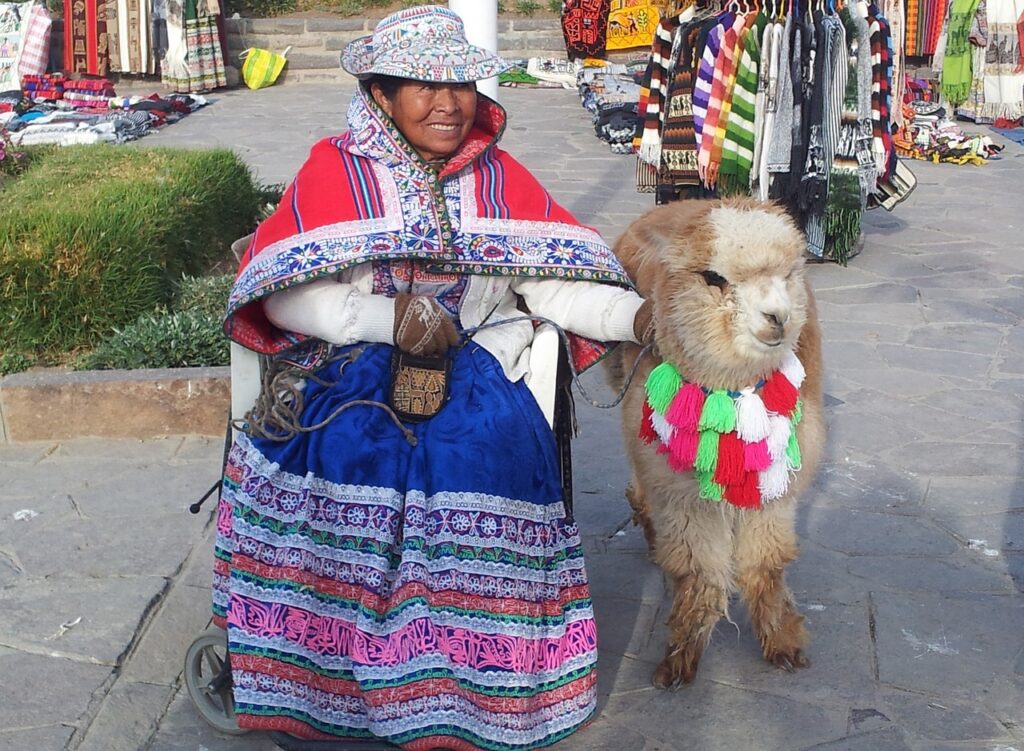
Peruvian Ponchos: A Blend of Tradition and Fashion
One of the most iconic pieces of traditional clothing, the Peruvian poncho, is not just a garment but a symbol of identity. For this purpose crafted from wool and adorned with bright, vibrant patterns, these ponchos reflect the rich textile traditions passed down through generations. Thus apart from being a fashion statement, they offer warmth in the chilly Andean climate.
Bright and Colorful: The Art of Peruvian Weaving
The indigenous people of Peru have mastered the art of weaving for centuries. Hence using natural dyes and age-old techniques, they create intricate patterns that narrate tales of their ancestors, beliefs, and the world around them. Therefore these textiles, be it in the form of rugs, bags, or clothing, are sought-after souvenirs for tourists.
Modern Peru: Cities and Urban Life

Lima: The Beating Heart of Peru
Lima, the capital city, is a bustling metropolis that offers a blend of the ancient and modern. Colonial-era buildings stand tall alongside contemporary skyscrapers, while its culinary scene is a testament to the nation’s diverse influences. As the largest city in Peru, Lima serves as the political, cultural, and economic hub of the nation.
Arequipa and Cusco: Historical Gems
Beyond Lima, cities like Arequipa, with its stunning Baroque architecture, and Cusco, once the capital of the Incan Empire, offer glimpses into the country’s rich history. While Arequipa dazzles with its white volcanic rock structures, Cusco is the gateway to the Sacred Valley and Machu Picchu, enchanting travelers with its cobblestone streets and vibrant markets.
Unexplored Corners: The Lesser-Known Wonders
Cerro Blanco Sand Dune: A Desert Marvel
Positioned near Nazca, the Cerro Blanco sand dune stands as the world’s highest sand dune. Of course adventure seekers often embark on dune buggy rides or sandboarding sessions, experiencing adrenaline rushes amidst this vast desert landscape.
Manu National Park: Biodiversity at its Best
While the Amazon Rainforest gets much of the limelight, Manu National Park, a UNESCO World Heritage site, is an unsung hero. Consequently with an array of ecosystems, from lowland jungles to high-altitude grasslands, it’s a haven for nature lovers.
FAQs: Facts About Peru
What is the national dish of Peru?
Lomo saltado, a delightful stir-fry made with beef, tomatoes, peppers, and onions, served with rice and fries, holds the title of Peru’s national dish.
Why is Peru considered a great place for bird-watching?
With over 1,800 species of birds, diverse landscapes, and several protected areas, Peru is a bird-watcher’s paradise, offering sightings of unique species in their natural habitats.
Conclusion (for this section)
The intricacies of Peru, both modern and ancient, form a mesmerizing tapestry that captivates the heart and soul. So as our exploration continues, it becomes evident that the facts about Peru are as diverse as its landscapes and as rich as its history.
The Spirits and Traditions: Peruvian Beverages and Festivals
Pisco Sour: A Drink to Remember
When in Peru, one cannot miss sipping on the nation’s iconic cocktail, the Pisco Sour. This tangy and frothy concoction is crafted from Pisco, a grape brandy, combined with lime juice, syrup, egg white, and angostura bitters. Pisco Sour is more than a drink; it’s a celebration of Peruvian heritage in a glass.
Festive Spirits: Celebrating Life and Ancestry
Peru’s calendar is dotted with vibrant festivals, each echoing the country’s rich cultural tapestry. From the Inti Raymi, honoring the Sun God, in Cusco, to the coastal celebration of La Marinera dance in Trujillo, every event offers an insight into the nation’s heart and soul.
Natural Wonders: Bodies of Water

Lake Titicaca: A Lake of Legends
Straddling the border between Peru and Bolivia, Lake Titicaca is recognized as the world’s highest navigable lake. Local folklore suggests that it’s the birthplace of the first Inca king. The Uros people, residing on its floating islands made of reed, offer a fascinating glimpse into life on this sacred body of water.
The Mighty Amazon River: Peru’s Lifeline
Originating from the Peruvian Andes, the Amazon River courses through the heart of the nation before making its way to the Atlantic Ocean. Serving as a lifeline to numerous communities and ecosystems, this river holds mysteries and tales in every ripple and wave.
The Deep Ravines: Canyons of Peru
Colca Canyon: Nature’s Grandeur
Often compared to the Grand Canyon in the United States, the Colca Canyon in Southern Peru is among the world’s deepest canyons. Majestic terraced fields, ancient tombs, and the spectacular flight of the Andean condor are just some of the sights that await visitors here.
Cotahuasi Canyon: Secluded Beauty
Even deeper than Colca, the Cotahuasi Canyon stands as the world’s deepest canyon. Its remote location ensures fewer tourists, making it a serene retreat for those seeking solitude amidst nature.
Incan Wonders Beyond Machu Picchu
Lost City of the Incas: Choquequirao
While Machu Picchu is renowned worldwide, Choquequirao, often termed as the ‘sister city’ of Machu Picchu, remains a hidden gem. This archeological site, still undergoing excavation, is larger than Machu Picchu and offers a deeper dive into the Incan architecture and culture without the crowds.
The Sacred Rock of Saywite
Nestled in the Apurímac region, the Saywite archaeological site is famed for its massive monolithic rock, intricately carved with numerous figures, possibly representing an ancient Andean map.
FAQs: Facts About Peru
Is it safe to drink tap water in major cities of Peru?
While tap water in major cities is treated, it’s recommended for travelers to drink bottled water to avoid any potential stomach issues.
Are the indigenous languages of Peru taught in schools?
Yes, in regions where indigenous languages like Quechua and Aymara are predominant, they are taught alongside Spanish, preserving the linguistic heritage.
Conclusion (for this section)
Peru, with its harmonious blend of natural beauty, ancient traditions, and modern vibrancy, is a country that promises a myriad of experiences. As we delve deeper into the myriad facts about Peru, we’re continually reminded of its unparalleled richness and diversity.
The Mysterious Patterns: Nazca Lines
Enigmatic Designs from Above
Stretching across the Nazca Desert, the mysterious Nazca Lines have puzzled researchers and tourists alike for decades. These geoglyphs, ranging from simple geometric patterns to intricate depictions of animals and plants, are best viewed from the sky. Their purpose remains shrouded in mystery, though theories suggest they served religious or astronomical functions for ancient people.
The Majestic Andes: Roof of South America

Cordillera Blanca: Snow-capped Splendor
Dominating the skyline, the Cordillera Blanca is the most extensive tropical ice-covered mountain range in the world. Mount Huascarán, the highest peak in Peru, beckons mountaineers and trekkers from all corners of the globe, offering both challenges and breathtaking panoramas.
The Andes’ Cultural Imprint
The Andes Mountain Range is not just a geographical marvel but also a cultural nucleus. Indigenous people have inhabited these mountains for millennia, shaping the history, traditions, and very essence of Peru. From ancient Incan cities to remote villages, the Andes stand as silent witnesses to the evolution of bright vibrant people.
Flora and Fauna: Peru’s Biodiversity
Amazon Jungle: Nature’s Paradise
The Amazon Rainforest, covering nearly half of Peru, is a hotspot of biodiversity. Home to an array of species, from the elusive jaguar to vibrant parrots, this region offers an authentic jungle experience. The Manu National Park and Tambopata Reserve are prime locations for eco-tourists seeking an intimate encounter with nature.
Puya Raimondii: The Queen of the Andes
Endemic to the high-altitude regions of the Andes in Peru and Bolivia, the Puya Raimondii is the world’s tallest bromeliad, reaching up to 10 meters in height. This plant, known to live for a century, blooms only once in its lifetime, showcasing thousands of flowers.
Beyond Nature: People and Traditions
Language and Lifestyles
While Spanish is the official language of Peru, native Quechua people predominantly speak Quechua, and many other indigenous languages add to the nation’s linguistic tapestry. Each language reflects a unique way of life, traditions, and worldview, enriching the cultural milieu of this South American country.
Traditional Delights: Peruvian Ponchos and More
Traditional Peruvian ponchos, vibrant and warm, tell tales of regions, traditions, and artisanal skills. Similarly, the cuisine, dances, and rituals vary from the coastal region to the highlands, offering a kaleidoscope of experiences.
Concluding Thoughts on the Land of the Incas
With its myriad landscapes, from the Pacific Ocean’s shores to the towering Andes peaks and the dense Amazon Jungle, Peru is a land of contrasts and surprises. In fact its history, stretching from ancient civilizations like the Inca Empire to the modern-day vibrancy of cities like Lima, is a testament to its resilient and ever-evolving spirit.
Each fun fact about Peru unravels a story, a legend, a tradition, or a natural marvel, beckoning travelers and history enthusiasts alike. Whether it’s tracing the Inca Trail, exploring the mysteries of Machu Picchu, savoring a Pisco Sour, or simply immersing oneself in its daily life, Peru promises memories that linger for a lifetime.

Adventures in Altitude: Embracing the Heights
Rainbow Mountain: A Palette of Natural Beauty
Vinicunca, more popularly known as Rainbow Mountain, boasts striations of vibrant colors resulting from mineral deposits over the ages. Hikers are rewarded with a stunning panoramic view after a strenuous trek, making it a must-visit for those seeking both beauty and adventure in the Peruvian Andes.
Dealing with Altitude Sickness
Many travelers venturing into Peru’s high-altitude regions face the challenge of altitude sickness. As a result it’s essential to acclimatize, stay hydrated, and consider remedies like coca leaves, a traditional solution offered by the indigenous people.
Coastal Wonders and Culinary Delights
Peru’s Pacific Coast: A Blend of History and Natural Beauty
From the vast dunes of Cerro Blanco to the bustling coastal cities, the Pacific Coast of Peru offers a diverse range of attractions. Beach lovers, surfers, and history enthusiasts will find something tailored to their interests along this sun-kissed stretch.
Ceviche: A Taste of the Ocean
One of Peru’s most iconic dishes, ceviche, blends raw fish cured in citrus juices with onions, chili, and cilantro. This refreshing dish captures the essence of the Pacific Ocean and is a testament to Peru’s rich culinary heritage.
Modern Meets Ancient: The Capital City
Lima: The Gateway to Peru
Often the first stop for travelers, Lima, the capital city, is a bustling metropolis that seamlessly merges the ancient with the contemporary. From pre-Colombian temples in the heart of the city to the modern skyline overlooking the Pacific, Lima showcases every facet of Peru’s multifaceted charm.
The Nightlife and Cultural Scene
Beyond its historic sites, Lima is known for its vibrant nightlife, theaters, and museums. The city pulsates with energy as soon as the sun sets, promising an exciting mix of entertainment and cultural immersion.
A Final Word: Embracing the Spirit of Peru
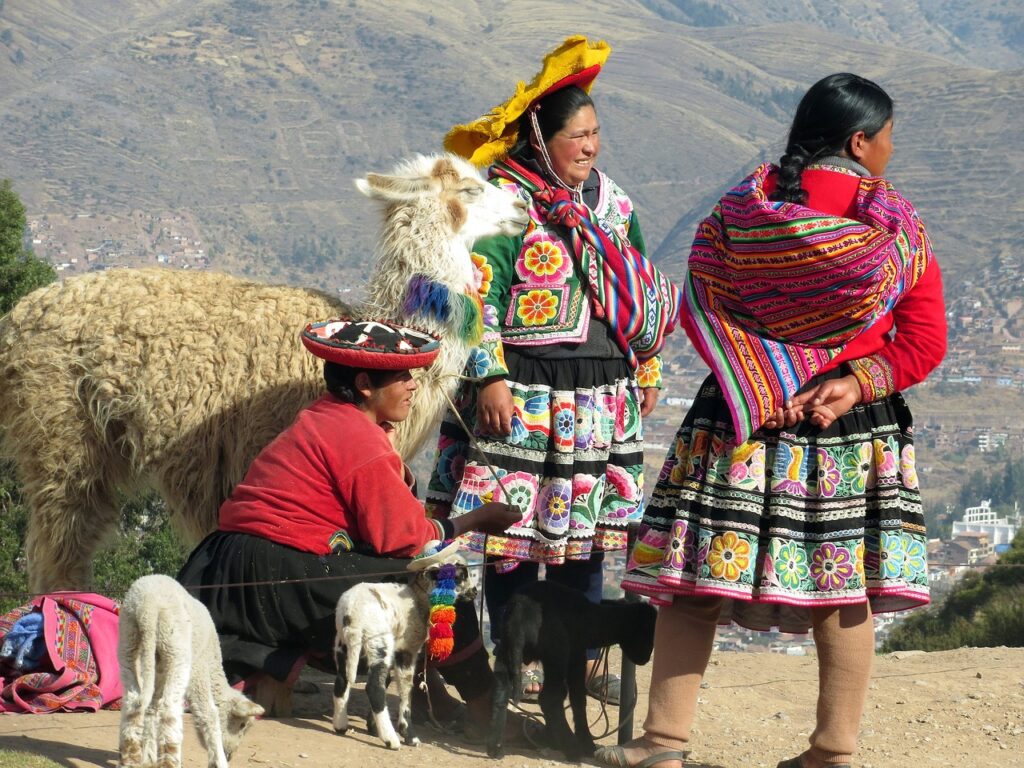
Having explored the myriad facets and facts about Peru, one thing is clear: this nation is more than its landscapes, more than its history, and more than its cultural tapestry. It’s a feeling, an experience, and an emotion. Each corner of this vast South American country narrates a different story, each person a different memory, and each tradition a different tune.
Peru, with its mountains and jungles, beaches and valleys, ancient ruins, and modern cities, is a symphony of experiences waiting to be discovered. So, whether you’re an adventurer at heart, a history buff, a culinary connoisseur, or just someone looking to understand the soul of a nation, Peru has something to offer.
FAQs Facts About Peru (Continuation)
How do I best prepare for my trip to Peru?
It’s recommended to pack layers as the climate varies across regions. Also, brushing up on basic Spanish and familiarizing oneself with local customs can enhance the travel experience.
Is the Inca Trail the only way to reach Machu Picchu?
No, while the Inca Trail is popular, there are alternative treks like the Salkantay and Lares. Additionally, one can take a train to Aguas Calientes and then a bus or walk to Machu Picchu.
Facts About Peru: Final Conclusion
Finally from the depths of its canyons to the heights of its peaks, from its ancient ruins to its bustling cities, and from its traditional melodies to its modern beats, every fact about Peru creates a harmonious melody that resonates with the heart and soul. Embarking on a journey here is not just about visiting a destination but about experiencing a rich tapestry of history, culture, nature, and emotions. Welcome to Peru, a treasure trove of stories waiting to be told. If you have found this article “Facts About Peru” enlightening please share it, thank you.


